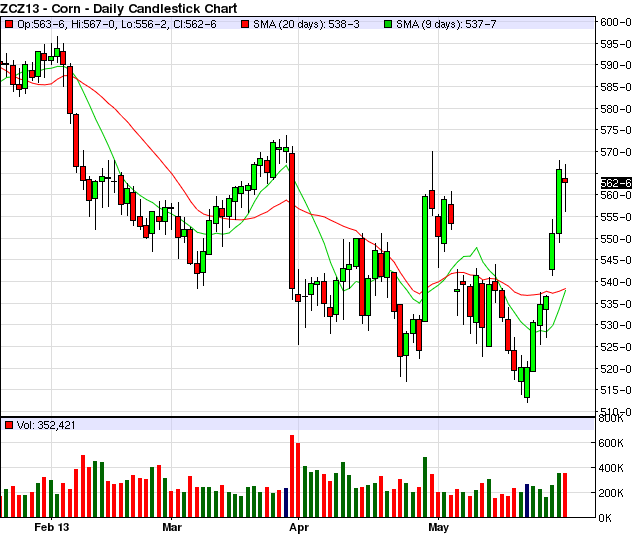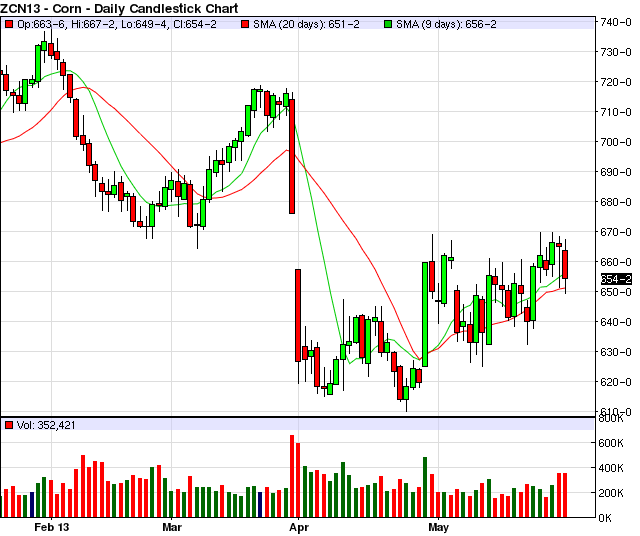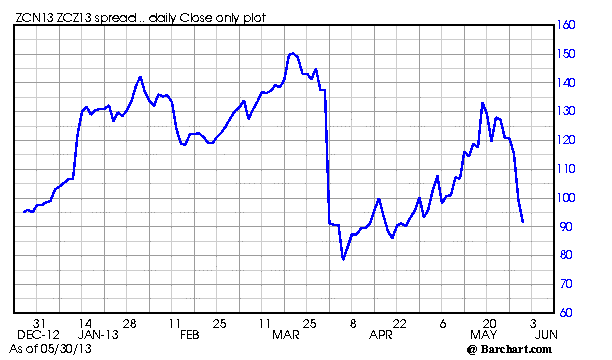by Lance Roberts
Howard Marks once wrote:
“Resisting – and thereby achieving success as a contrarian – isn’t easy. Things combine to make it difficult; including natural herd tendencies and the pain imposed by being out of step, since momentum invariably makes pro-cyclical actions look correct for a while. (That’s why it’s essential to remember that “being too far ahead of your time is indistinguishable from being wrong.”)
Given the uncertain nature of the future, and thus the difficulty of being confident your position is the right one – especially as price moves against you – it’s challenging to be a lonely contrarian."
It is from this viewpoint within which I most often find myself being at odds with the mainstream journalists, economists and analysts. I prefer to look at the data as "it is" rather than as "I hope it will be," for in the long run, it is reality that will win out over fantasy. This was the premise from which I recently wrote "Evaluating 3 Bullish Arguments" wherein I analyzed three of the most common fundamental arguments used to support "bullish outlooks." Those arguments all failed under real scrutiny.
While the average "saver" chases the stock market, salivating at every tick higher, what they often fail to recognize is the mounting risks that will eventually lead to larger than expected losses of investment capital. History is replete with evidence that shows that the longer an up cycle lasts the larger the losses are when it contracts. It ALWAYS contracts eventually. Individuals, despite the television commercials that promote the latest do-it-yourself trading platforms, are not capable of navigating the financial markets over a full cycle.
It is important to understand that I am not "bullish" or "bearish." I have no bias towards the markets other than participating when it is rising and protecting client capital when it isn't. However, I am often given the moniker of a "bear" because I choose to point out the risks to investment capital rather than joining in with the lemmings all merrily marching towards to their eventual demise. My job, as a portfolio manager, is to navigate the markets for the "full cycle" - both the up cycle as well as the down. While the media chastises individuals for not chasing the market to the upside - I have never met an individual yet that was happy with matching market performance during a 20% decline. Losses of investment capital hurt individuals far more than missed opportunities. Lost capital is also far more difficult to recoup.
However, while I have spilt much ink lately pointing out the risks to investors ahead (see here, here and here), it is important that you realize that our portfolio models remain fully invested and that I have been correct in my assessments of the current market trends. Back in February, which now seems like a lifetime ago, I penned an article entitled "Get Ready For The Run To All-Time Highs" in which we discussed the reasons why the stock market would likely push to all-time nominal highs. At that time I stated:
"The bullish trend is supported, at the moment, by excessive bullish optimism and $85 billion a month in liquidity. Market participants, like a marathon runner, are so amped up on endorphins that they lose awareness of their surroundings. Right now, investors see the finish line just ahead as CNBC flashes banners on their screen with countdowns of points to reach a new all-time high.
However, it is important as investors, that we do not simply dismiss the dangers that continue to build in the economy and the markets. To simply assume that there are no excesses being created in various asset classes is short sighted. Asset "bubbles" are never recognized, or acknowledged, until after the fact. Currently the increases being witnessed are primarily due to the inflows of liquidity which is masking the deterioration of fundamental underpinnings. That is an unsustainable trend in the longer term, but, in the short term there is nothing inhibiting further increases as long as complacency remains high."
That analysis, some 160 S&P 500 points later, remains salient. While the risks are definitely mounting (record margin debt levels, low "junk bond" yields, markets at extreme deviations from long term moving averages) there are several reasons why stocks could continue to climb higher in the near term.
The Fed's Liquidity Pump
The most obvious driver of stocks currently is the Federal Reserve's ongoing balance sheet expansion program which pushes liquidity directly into the financial markets. As the chart shows below there is an extremely high correlation, since 2009, between the expansion of the Fed balance sheet and the financial markets.

As long as the Federal Reserve remains committed to its "accommodative strategies" the markets are likely to remain buoyant against weaker fundamental and economic underpinnings. This driver, by all counts, is the sole driver of higher asset prices currently and in the near future.
Complete Complacency
I stated recently that the "lack of fear is what we should fear the most." When investors are the most complacent that is when bad things tend to occur in the financial markets. However, complacency is also a tailwind for stocks as long as there are no exogenous shocks to change the course of the flow of money.
The chart below is the STA Risk Ratio which is a composite index of various sentiment indicators such as the volatility index, AAII bull/bear ratio, Institutional Investor bull/bear ratio, NYSE high/low ratio and others. When this index is rising, as it is currently, markets are on the rise as well. While this index is near historical peaks there is current no "event risk" present, that we are aware of, at the moment to send investors scurrying for cover.
This complete lack of fear, combined with the belief that as long as the Fed is in play there is no downside risk to owning stocks, makes it is very possible for stocks to continue upward trajectory within the context of the current bullish trend. As we will discuss below, there is currently no overhead resistance for stocks from a historical perspective.

Bullish Trend
The laws of physics state that an object in motion will remain in motion until it meets resistance. That is currently the dynamic of the markets. With the breakout of the bullish uptrend, combined with the break of long term overhead resistance, there is nothing to stop asset prices from rising further until the next major correction occurs.

I have drawn three important lines in the chart above. The break of overhead resistance will now become the first level of support for the markets on any correction. If the markets do correct, and find support at 1600 while simulatenously working off the much overbought condition in the process, then the market could rally higher from this level. This same idea goes for the previous two upward trending bullish support lines. However, if the market breaks below 1400 then a different dynamic comes into play. The current bullish cycle will end and a bear market investment strategy will need to be put into play.
However, currently, there is little to stop asset prices from rising higher technically as long as:
1) The Fed remains engaged in their current liquidity programs.
2) Economic and fundamental "bad news" remains "good news" for the markets as it keeps the Federal Reserve in play.
3) The other major Central Banks remain engaged in their liquidity programs.
4) No exogenous events spring up such as a resurgence of the Eurozone crisis.
5) Interest rates remain contained below 2.5%
Risks Remain
While stocks could continue to climb higher that does not mitigate the underlying risks. In fact, it is quite the opposite. It is very likely that we are creating one, or more, asset bubbles once again. However, what is missing currently is the catalyst to spark the next major correction.
That catalyst is likely something that we are not even aware of at the moment. It could be a resurgence of the Eurocrisis, a banking crisis or Japan's grand experiment backfiring. It could also be the upcoming debt ceiling debate, more government spending cuts, or higher tax rates. It could even be just the onset of an economic business cycle recession from the continued drags out of Europe and now the emerging market countries.
Regardless, at some point, and it is only a function of time, reality and fantasy will collide. The reversion of the current extremes will happen devastatingly fast. When this occurs the media will question how such a thing could of happened? Questions will be asked why no one saw it coming. Fingers will be pointed and blame will be laid. While I am absolutely certain this will happen - I just don't know when. It could be later this year or even next year. Timing is always the problem and as Howard Marks stated - being early, even if you are right, is the same as being wrong.
This is why it is more important than ever that you remain aware of the risks and pay attention to exposure that you take on within your portfolio. I point out to you the risks that we are watching, the detail behind the headlines and historical precedents that have led to massive losses of investor capital in the past, so that you can take appropriate risk management actions in your portfolio. There is no prize for beating the market from one year to the next, however, there are severe penalties when things don't go as planned.
Enjoy the ride - just don't forget that our job as investors is to "sell high" so that we can "buy low." This is the one simple rule that is always overlooked by the media, analysts and economists who are chiding you to chase extremely overbought, over extended and excessively bullish markets.
See the original article >>




















